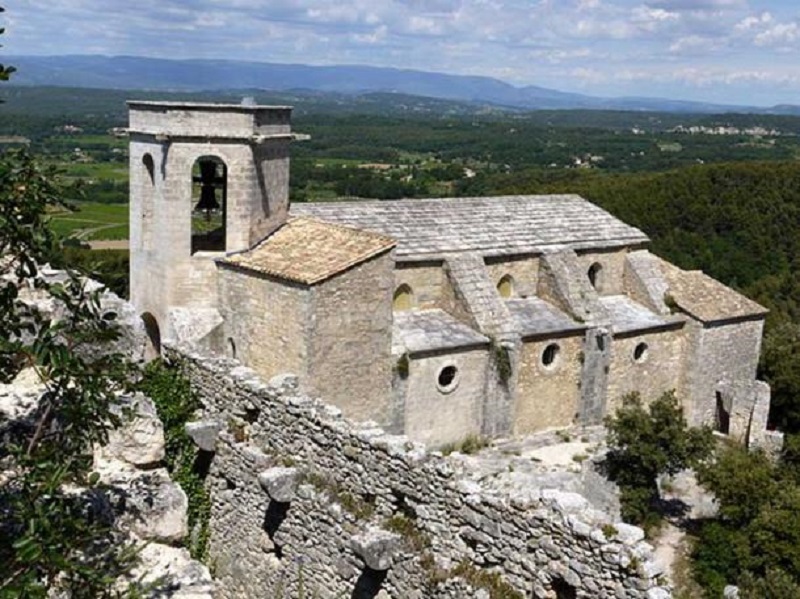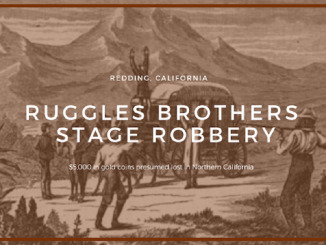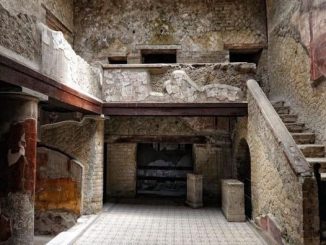Oppède Le Vieux is a small town in France, famous for its medieval castle, which today lies in ruins. The town was abandoned several centuries ago, when its inhabitants left for a new area where they could farm more effectively. Although the town is in ruins today, it has a colorful history behind it, involving a villainous pope and a group of artists who fled the Nazis during World War II.
Oppède Le Vieux is located north of the Luberon, a mountain massif in central Provence, southern France. It is built against the massif known as ‘Petit Luberon’, meaning ‘Little Luberon’, and can be found in the Vaucluse region of the Provence-Alpes-Côte d’Azur region.
A corner of Oppède Le Vieux. Photo source: (CC BY-SA 3.0)
Oppède Le Vieux is said to date back to the 12th century. During this time, the town was home to a farming community and its most prominent structures were its church and castle. The church is called Collegiale Notre-Dame d’Alidon, and is located above the town. Inside the walls of this ancient structure there are many frescoes, although many of these are faded or dilapidated. It is known that the church is currently being restored.
As for the castle, it was once the property of the count of Toulouse. Then, in the 13th century, the structure fell into papal hands. During the Western Schism that took place from the second half of the 14th century to the first half of the following century, Oppède Le Vieux castle was the residence of Antipope Benedict XIII for a period of time. Antipope is an individual opposed to the person generally considered to be the legitimately elected Pope.

Oppède le Vieux castle ruins, Vaucluse, France (Public domain)
According to one source, when the opposing pope was forced to flee town, he “flew away” from above through an arched portico that opened into the empty space below, it is said, brought by the devil himself. The next famous/infamous resident of the castle was Jean Maynier, Baron Oppède. The baron is said to have made the castle his headquarters, from which he waged war against the Waldensians, a Christian movement founded by Peter Waldo in the 12th century. During this war, 11 villages are said to have been destroyed by the baron’s men.

Statue of Peter Waldo ( CC BY 3.0 )
Although it flourished in the Middle Ages, Oppède Le Vieux was abandoned after the 16th century. It is claimed that because those times were peaceful, most of the town’s residents decided to move down to the valley, where land was more suitable for agricultural purposes. A new town, called Oppède les Poulivets, was founded and the old town was abandoned for the next few centuries.
During World War II, some new life was brought into the ghost town. During this period, Oppède Le Vieux became the perfect refuge for artists who wanted to escape the repression of the Nazis occupying France. This group, which included painters, writers and sculptors, was called le Groupe d’Oppède, and was led by architect Bernard Zehrfuss.
During the war, the Nazis carried out a purge of art that was not useful to the German government for propaganda purposes. Museum directors and artists who refused to adhere to the art approved by the Empire were killed or banned from practicing art. The Gestapo regularly made impromptu visits to artists’ homes to ensure their compliance. In response to oppressive restrictions, many artists were forced to flee and the ruins of Oppède Le Vieux provided a good refuge.
The community of artists seeking refuge grew to about 50 strong, the most notable of which were sculptor François Stahly and artist and writer Consuelo de Saint Exupéry (wife of Antoine de Saint Exupéry, author of Le Petit Prince). However, this community did not last long and they eventually left town. Today, Oppède Le Vieux is a tourist destination.
Medieval Cathedral of Notre-Dame-d’Alydon d’Oppède, Vaucluse, France ( CC BY-SA 3.0 )




